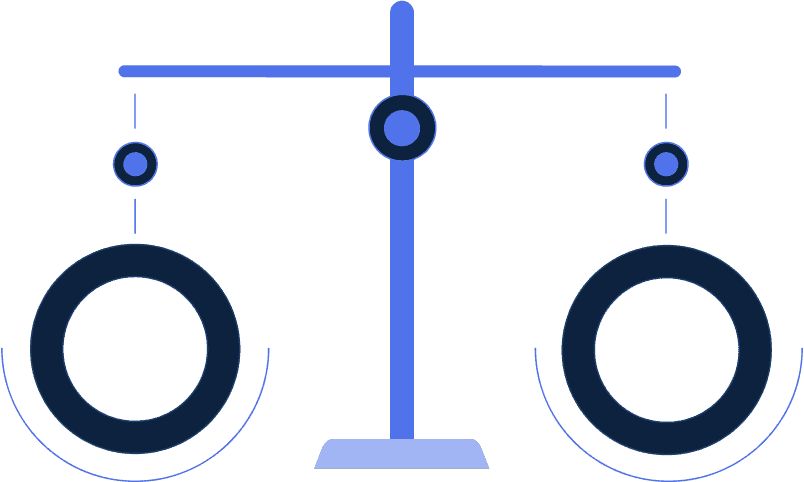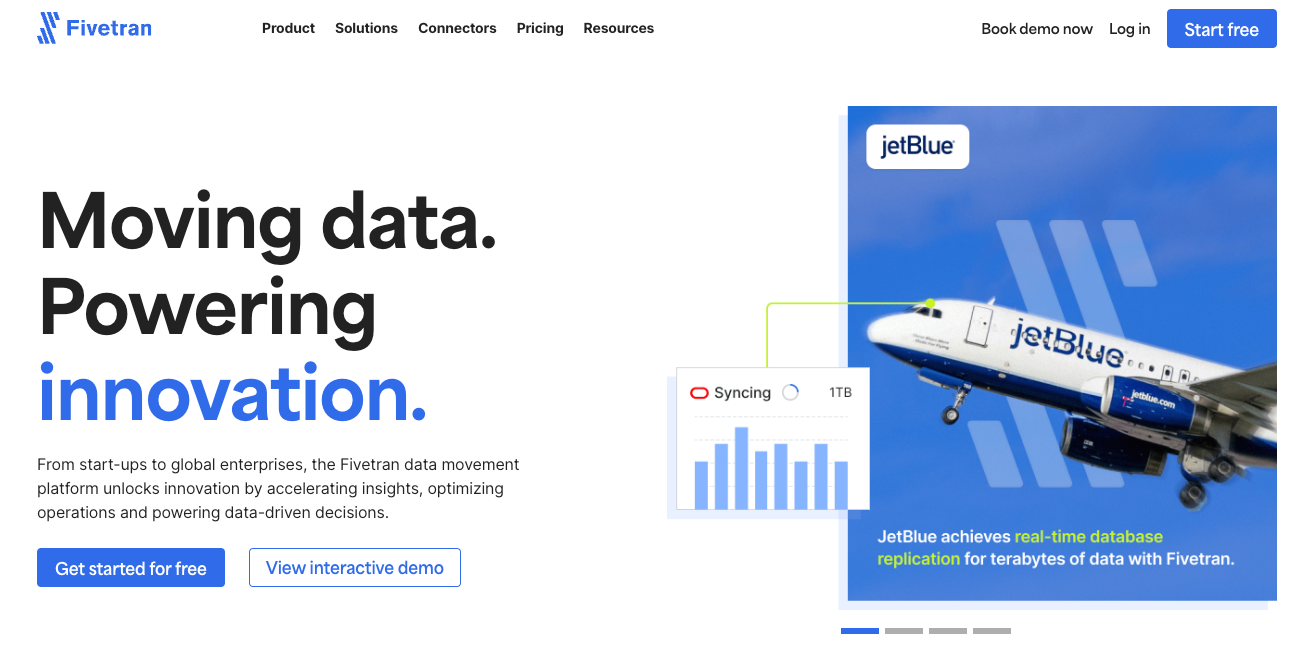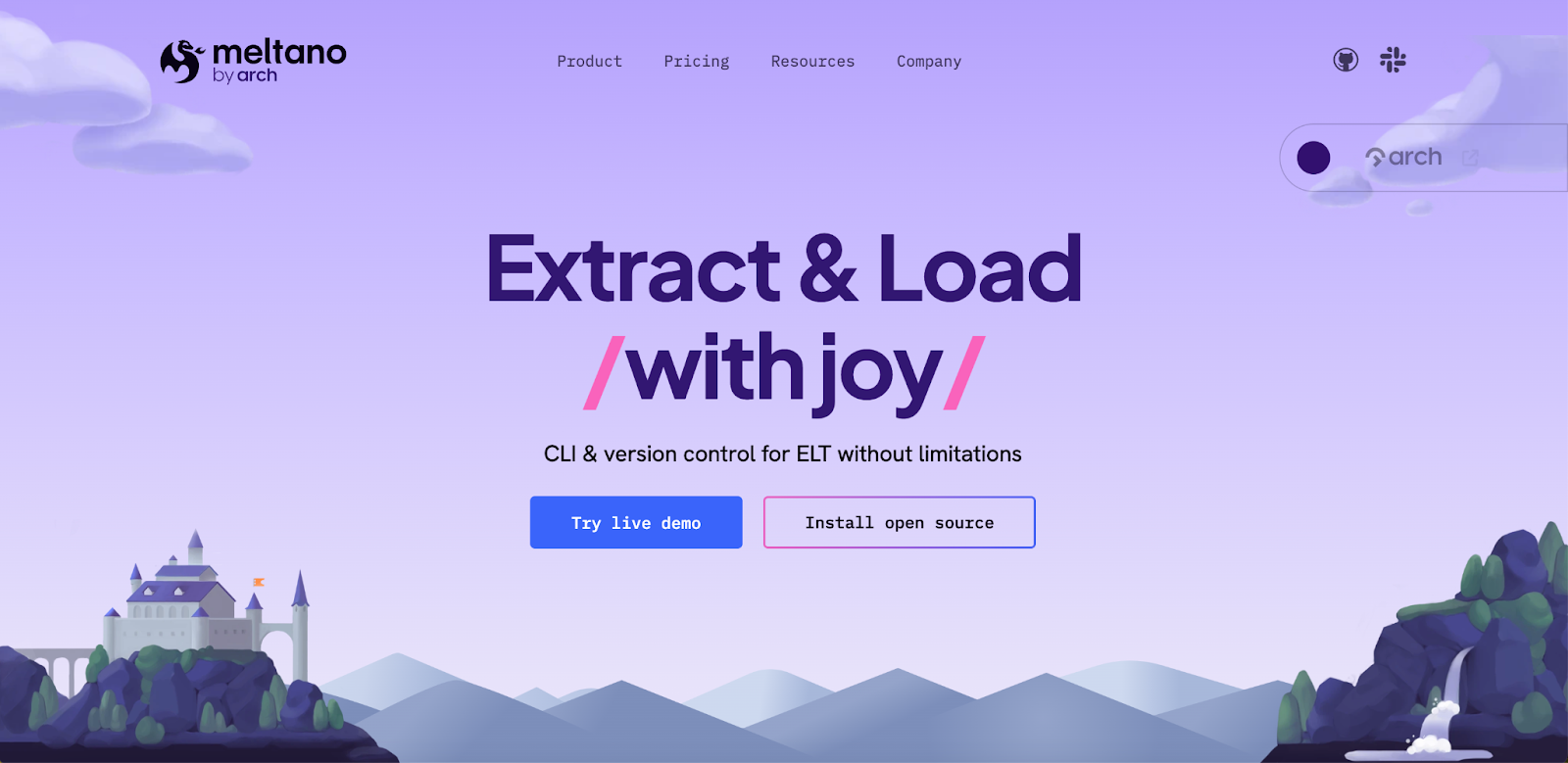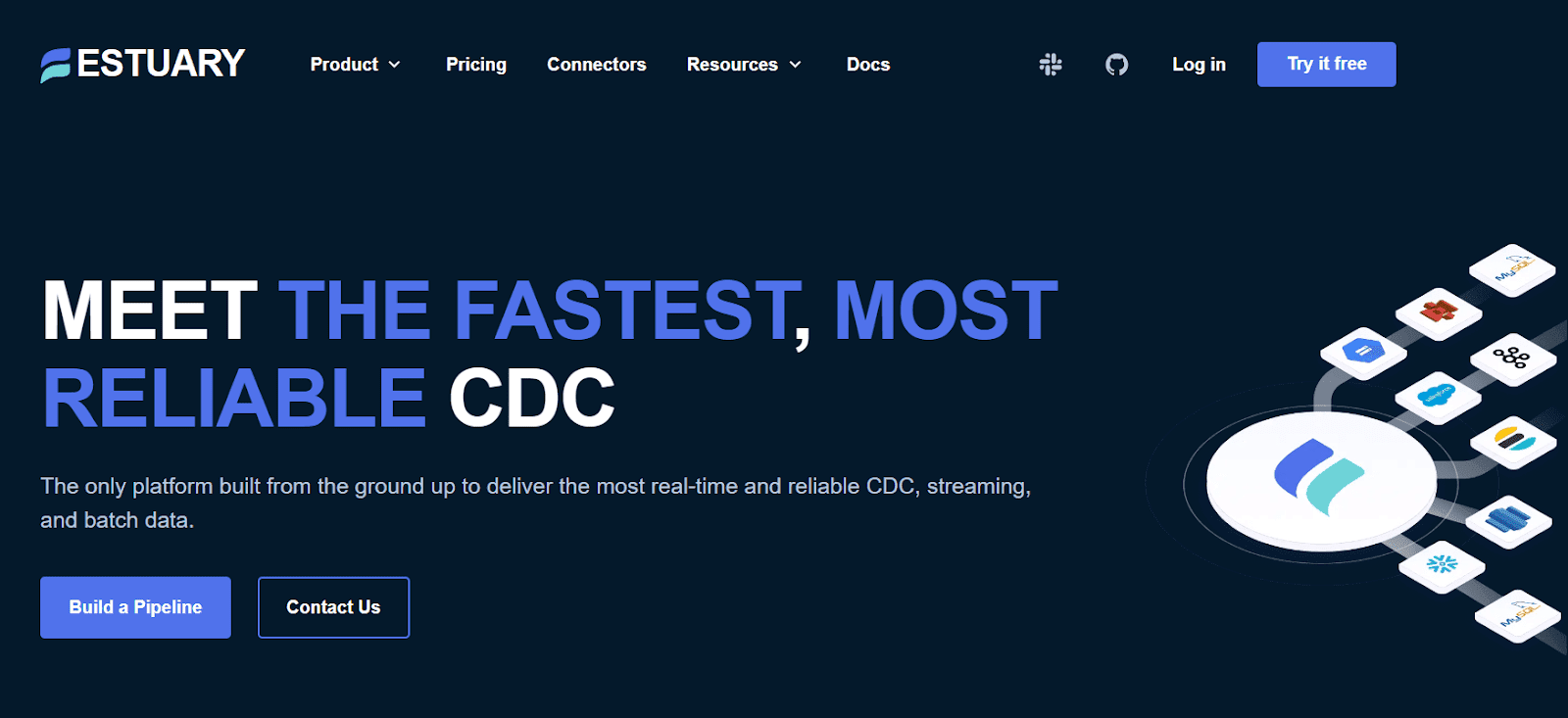Fivetran VS Meltano
Read this detailed 2026 comparison of Fivetran vs Meltano. Understand their key differences, core features, and pricing to choose the right platform for your data integration needs.
View all comparisons


Introduction
Do you need to load a cloud data warehouse? Synchronize data in real-time across apps or databases? Support real-time analytics? Use generative AI?
This guide is designed to help you compare Fivetran vs Meltano across nearly 40 criteria for these use cases and more, and choose the best option for you based on your current and future needs.
Comparison Matrix: Fivetran vs Meltano vs Estuary
 |  |  | |||||||||||||||||||||||||||||||||||||||||||||||||||||
|---|---|---|---|---|---|---|---|---|---|---|---|---|---|---|---|---|---|---|---|---|---|---|---|---|---|---|---|---|---|---|---|---|---|---|---|---|---|---|---|---|---|---|---|---|---|---|---|---|---|---|---|---|---|---|---|
| |||||||||||||||||||||||||||||||||||||||||||||||||||||||
| |||||||||||||||||||||||||||||||||||||||||||||||||||||||
| |||||||||||||||||||||||||||||||||||||||||||||||||||||||
| |||||||||||||||||||||||||||||||||||||||||||||||||||||||
| |||||||||||||||||||||||||||||||||||||||||||||||||||||||
| |||||||||||||||||||||||||||||||||||||||||||||||||||||||

Fivetran

Fivetran was founded in 2012 by data scientists who wanted an integrated stack to capture and analyze data. The name was a play on Fortran and meant to refer to a programming language for big data. After a few years the focus shifted to providing just the data integration part because that’s what so many prospects wanted. Fivetran was designed as an ELT (Extract, Load, and Transform) architecture because in data science you might not yet know how you want to process your data, and so would want to store the raw data.
In 2018, Fivetran raised their series A, and then added more transformation capabilities in 2020 when it released Data Build Tool (dbt) support. That year Fivetran also started to support CDC. Fivetran has since continued to invest more in CDC with its HVR acquisition.
Fivetran’s design worked well for many companies adopting cloud data warehouses starting a decade ago. While all ETL vendors also supported “EL” and it was occasionally used that way, Fivetran was cloud-native, which helped make it much easier to use. The “EL” is mostly configured, not coded, and users can choose between dbt Core, dbt Cloud, and Coalesce for transformations.
When deciding whether to use Fivetran, special consideration should be made for the desired deployment option. Fivetran’s cloud-based SaaS and self-hosted HVR can be very different products, with diverging capabilities requiring separate documentation tabs. HVR, unlike Fivetran’s standard batch model, can handle real-time streaming data, but must be managed and maintained, incurring higher engineering effort. HVR also only lists ~30 supported source and target locations.
Pros
- Ease of Use: Fivetran is a modern SaaS ELT platform with an easy-to-use UI, especially in comparison to more traditional ETL tools. It allows you to set up a data pipeline without coding.
- Pre-built Connectors: Fivetran offers over 700 connectors, more than 450 of which are API-based “lite” connectors built for specific use cases. Lite connectors tend to offer limited endpoints and generally don’t support custom data.
- Scalability: Fivetran is known for scaling better than many of its competitors.
- Integration with dbt: Fivetran supports dbt Core and dbt Cloud as well as an integration with Coalesce.
- Focus on replication: Fivetran is good at data extraction and loading (EL), even if it is batch only, making it a strong choice if your primary goal is to efficiently move data into your warehouse for analysis.
- Advanced schema evolution: Fivetran and Estuary are the two leading vendors with support for automating how changes in sources are passed through to destinations.
Cons
- Latency: While Fivetran uses change data capture at the source, its primary focus is on batch data rather than streaming. Fivetran’s Standard tier guarantees 15 minutes of latency. Enterprise and Business Critical is 1 minute of latency, but costs more than 2x the standard edition. Its ELT architecture can also be slowed down by the target load and transformation times.
Fivetran’s HVR option supports real-time data, but as it is self-hosted rather than managed, it comes with its own complexity around setup and maintenance. - Costs: Fivetran’s high vendor costs can become an issue, as they have been 5x the cost of Estuary as stated by customers. Fivetran costs are based on monthly active rows (MAR), or the number of rows updated or added within a month. This may seem like a transparent pricing model, but for several reasons (see below and the pricing section) it can quickly add up.
- Unpredictable costs: One major reason for high costs is that MARs are based on Fivetranʼs internal representation of rows, not rows as you see them in the source. This can make the MAR model opaque and difficult to properly budget.
Fivetran has also been known to change their pricing with little notice, causing companies to swallow sudden price hikes or scramble to find different vendors. - Reliability: Another complaint against Fivetran is reliability. Their status page commonly reports 15 or more incidents per month, a combination of API outages, connector failures, and other degraded functionality. In the past, Fivetran has also been known to experience outages lasting more than 2 days, breaking listed SLAs.
Make sure you understand Fivetran’s current SLA in detail. Fivetran has had an “allowed downtime interval” of 12 hours before downtime SLAs start to go into effect on the downtime of connectors. They also do not include any downtime from their cloud provider. - Deployment options: Besides the public SaaS option, self-hosted HVR has some serious limitations. It requires installation effort and only supports a handful of sources and destinations.
- Support: Customers also complain about Fivetran support being slow to respond. Combined with reliability issues, this can lead to a substantial amount of data engineering time being lost to troubleshooting and administration.
- DataOps: Fivetran does not provide much control or transparency into what they do with data and schema: they alter field names and change data structures and do not allow you to rename columns. This can make it harder to migrate to other technologies.
- Roadmap: Future features and their timelines can be somewhat opaque. While Fivetran provides an SLA for some Lite connectors through their By Request program, wait time on requested features can otherwise be long. For example, Amazon S3 support was only released in 2023 after 2+ years of development and many user requests.
Fivetran Pricing
Fivetran's pricing is based on monthly active rows (MAR). This can be very unpredictable because MARs are based on Fivetran’s internal representation of data, not yours. Any non-relational or nested data gets turned into highly normalized rows that raise costs.
Lower latency is also very expensive. To reduce latency from 1 hour to 15 minutes can cost you 33-50% more (1.5x) per million MAR, and 100% (2x) or more to reduce latency to 1 minute, which is rarely deployed. Some connectors require all data to be extracted each time, which also becomes more expensive as you lower latency and increase the number of extracts.
Even then, you still have the latency of the data warehouse load and transformations. The additional costs of frequent ingestions and transformations in the data warehouse can also be expensive and take time. Companies often keep latency high to save money.
While a small deployment (2M MARs/month) can cost $700-$2667, 10M MARs/month get you into $10K a month. It is not unheard of for Fivetran costs to reach 6 digits annually, especially with certain high-cost connectors that end up having many more MARs.
For those looking for Fivetran alternatives, it's worth considering solutions that offer lower costs, real-time streaming, or more flexibility in schema control.
Meltano

Meltano was founded in 2018 as an open source project within GitLab to support their data and analytics team. It’s a Python framework built on the Singer protocol. The Singer framework was originally created by the founders of Stitch, but their contribution slowly declined following the acquisition of Stitch by Talend (which in turn was later acquired by Qlik).
Meltano is focused on configuration-based ELT using YAML and the CLI.
Pros
- Open source ELT: Meltano is the main successor to Stitch if you’re looking for a Singer-based framework.
- Configuration-driven: If you are looking for a configure-driven approach to ELT, Meltano may be a great option for you.
- Connectivity: Meltano and Airbyte collectively have the most connectors, which makes sense given their open source history with Singer. Meltano supports Singer and has an SDK wrapper for Airbyte, giving it 600+ open source connectors in total. Open source connectors have their limits, so it’s important to test out carefully based on your needs.
Cons
- Not low-code: If you’re looking for a more graphical, low-code approach to integration, Meltano is not a good choice.
- Latency: Meltano is batch-only. It does not support streaming. While you can reduce polling intervals down to seconds, there is no staging area. The extract and load intervals need to be the same. Meltano is best suited for supporting historical analytics for this reason.
- Reliability: Some will say Meltano has less issues when compared to Airybte. But it is open source. Connectors may not be maintained and if you have issues you can only rely on the open source community for support.
- Scalability: There isn’t as much documentation to help with scaling Meltano, and it’s not generally known for scalability, especially if you need low latency. Various benchmarks show that larger batch sizes deliver much better throughput. But it’s still not the level of throughput of Estuary or Fivetran. It’s generally minutes even in batch mode for 100K rows.
- ELT only: Meltano supports open source dbt and can import existing dbt projects. Its support for dbt is considered good. It also has the ability to extract data from dbt cloud. Meltano does not support ETL.
- Deployment options: Meltano is deployed as self-hosted open source. There is no Meltano Cloud, though Arch is offering a broader service with consulting.
- DataOps: Data engineers generally automate using the CLI or the Meltano API. While it is straightforward to automate pipelines, there isn’t much support for schema evolution and automating responses to schema changes.
Meltano Pricing
Meltano is open source. There is no pricing. But it’s not really free. You’ll need to spend more on data engineering resources to stand up, build, and maintain Meltano. If you need scalability, there isn’t a lot of documentation on how to scale. Make sure you evaluate carefully and find some Meltano expertise.
Estuary

Estuary is the right time data platform that replaces fragmented data stacks with one dependable system for data movement. Instead of juggling separate tools for CDC, batch ELT, streaming, and app syncs, teams use Estuary to move data from databases, SaaS apps, files, and streams into warehouses, lakes, operational stores, and AI systems at the cadence they choose: sub second, near real time, or scheduled.
The company was founded in 2019, built on Gazette, a battle tested streaming storage layer that has powered high volume event workloads for years. That foundation lets Estuary mix CDC, streaming, and batch in a single catalog and gives customers exactly once delivery, deterministic recovery, and targeted backfills across all of their pipelines.
Unlike traditional ELT tools that focus on batch loads into a warehouse, Estuary stores every event in collections that can be reused for multiple destinations and use cases. Once a change is captured, it is written once to durable storage and then fanned out to any number of targets without reloading the source. This reduces load on primary systems, provides consistent history for analytics and AI, and makes it easy to replay or reprocess data when schemas or downstream models change.
Estuary can run as a multi tenant cloud service, as a private data plane inside the customer’s cloud, or in a BYOC model where the customer owns the infrastructure and Estuary manages the control plane. This gives security and compliance teams the control they expect from in house systems with the convenience of a managed platform.
Estuary also has broad packaged and custom connectivity, making it one of the top ETL tools. The platform ships with a growing set of high quality native connectors for databases, warehouses, lakes, queues, SaaS tools, and AI targets. Estuary also supports many open source connectors where needed, so teams can consolidate around one system while still covering niche sources and destinations. Customers consistently highlight predictable pricing, strong reliability, and partner level support as key reasons they choose Estuary instead of Fivetran, Airbyte, or DIY stacks.
Estuary Flow is highly rated on G2, with users highlighting its real-time capabilities and ease of use.
Pros
- Right time pipelines: Estuary lets you choose the cadence of each pipeline, from sub second streaming to periodic batch, so cost and freshness match the workload.
- One platform for all data movement: Handles CDC, batch loads, and streaming in one product, which reduces tool sprawl and simplifies operations.
- Dependable replication: Exactly once delivery, deterministic recovery, and targeted backfills keep pipelines stable even when sources or schemas change.
- Efficient CDC: Log based CDC captures inserts, updates, and deletes once and reuses them for many destinations, reducing load on operational databases.
- High scale architecture: Gazette and collections support large, continuous data streams with reliable throughput across multiple targets.
- Modern transforms: Supports SQL and TypeScript based transformations in motion, and integrates cleanly with dbt for warehouse side ELT.
- Flexible deployment choices: Available as cloud SaaS, private data plane, or BYOC, giving enterprises strong control over data residency and security.
- Predictable total cost of ownership: Transparent pricing based on data volume and connector instances avoids MAR based surprises and is easy to forecast.
- Fast time to value: A guided UI, CLI, and templates help most teams build their first dependable pipelines in hours instead of weeks.
- Partner level support: Customers report quick connector delivery, responsive troubleshooting, and SLAs that make Estuary feel like an extension of their team.
Cons
- On premises connectors: Estuary has 200+ native connectors and supports 500+ Airbyte, Meltano, and Stitch open source connectors. But if you need on-premises app or data warehouse connectivity, make sure you have all the connectivity you need.
- Graphical ETL: Estuary has been more focused on SQL and dbt than graphical transformations. While it does infer data types and convert between sources and targets, there is currently no graphical transformation UI.
Estuary Pricing
Of the various ELT and ETL vendors, Estuary is the lowest total cost option. Estuary only charges $0.50 per GB of data moved from each source or to each target, and $100 per connector per month. Rivery, the next lowest cost option, is the only other vendor that publishes pricing of 1 RPU per 100MB, which is $7.50 to $12.50 per GB depending on the plan you choose. Estuary becomes the lowest cost option by the time you reach the 10s of GB/month. By the time you reach 1TB a month Estuary is 10x lower cost than the rest.
How to choose the best option
For the most part, if you are interested in a cloud option, and the connectivity options exist, you may choose to evaluate Estuary.
Modern data pipeline: Estuary has the broadest support for schema evolution and modern DataOps.
Lowest latency: If low latency matters, Estuary will be the best option, especially at scale.
Highest data engineering productivity: Estuary is among the easiest to use, on par with the best ELT vendors. But it also has delivered up to 5x greater productivity than the alternatives.
Connectivity: If you're more concerned about cloud services, Estuary or another modern ELT vendor may be your best option. If you need more on-premises connectivity, you might consider more traditional ETL vendors.
Lowest cost: Estuary is the clear low-cost winner for medium and larger deployments.
Streaming support: Estuary has a modern approach to CDC that is built for reliability and scale, and great Kafka support as well. It's real-time CDC is arguably the best of all the options here. Some ETL vendors like Informatica and Talend also have real-time CDC. ELT-only vendors only support batch CDC.
Ultimately the best approach for evaluating your options is to identify your future and current needs for connectivity, key data integration features, and performance, scalability, reliability, and security needs, and use this information to a good short-term and long-term solution for you.
Related comparisons to Fivetran
Related comparisons to Meltano
Getting started with Estuary
Free account
Getting started with Estuary is simple. Sign up for a free account.
Sign upDocs
Make sure you read through the documentation, especially the get started section.
Learn moreCommunity
I highly recommend you also join the Slack community. It's the easiest way to get support while you're getting started.
Join Slack CommunityEstuary 101
I highly recommend you also join the Slack community. It's the easiest way to get support while you're getting started.
Watch



